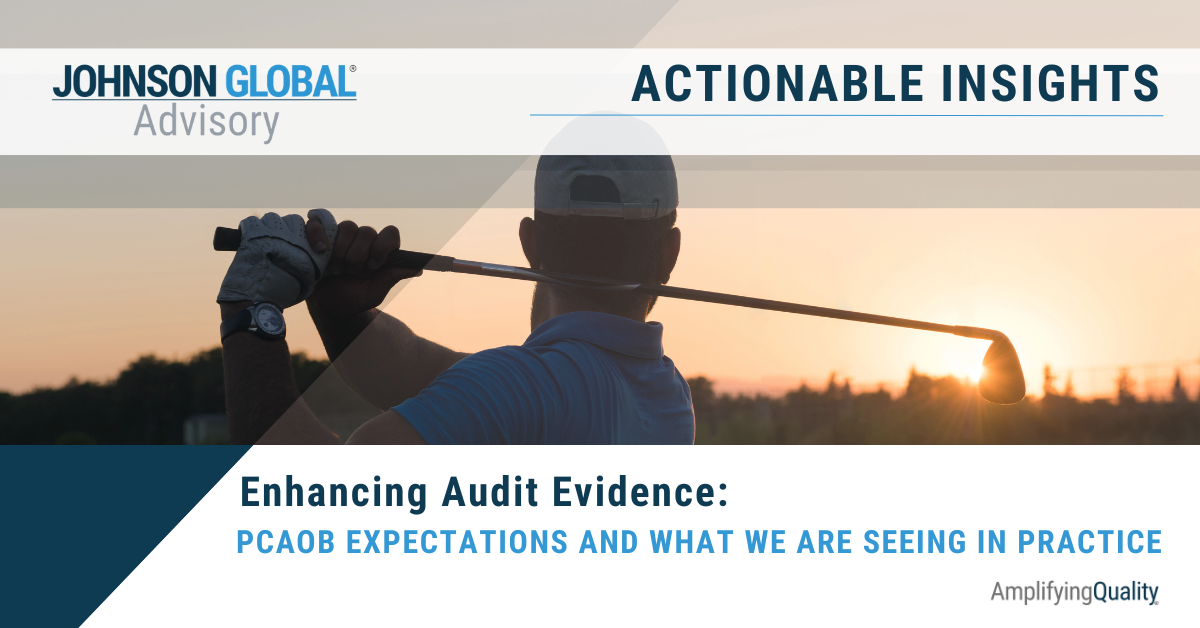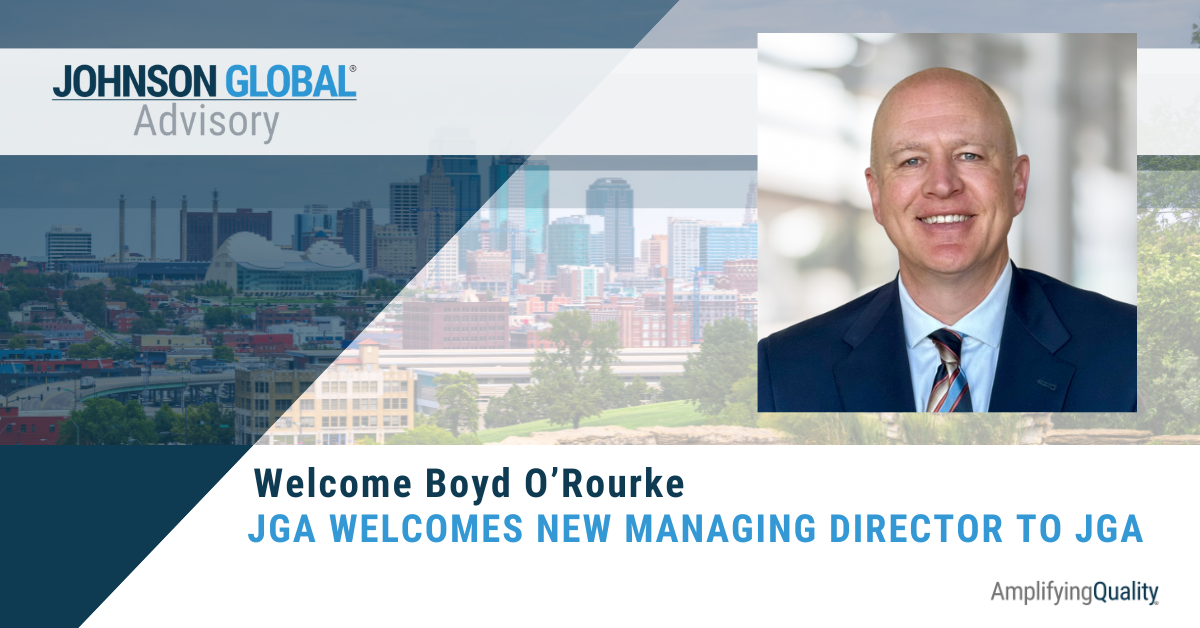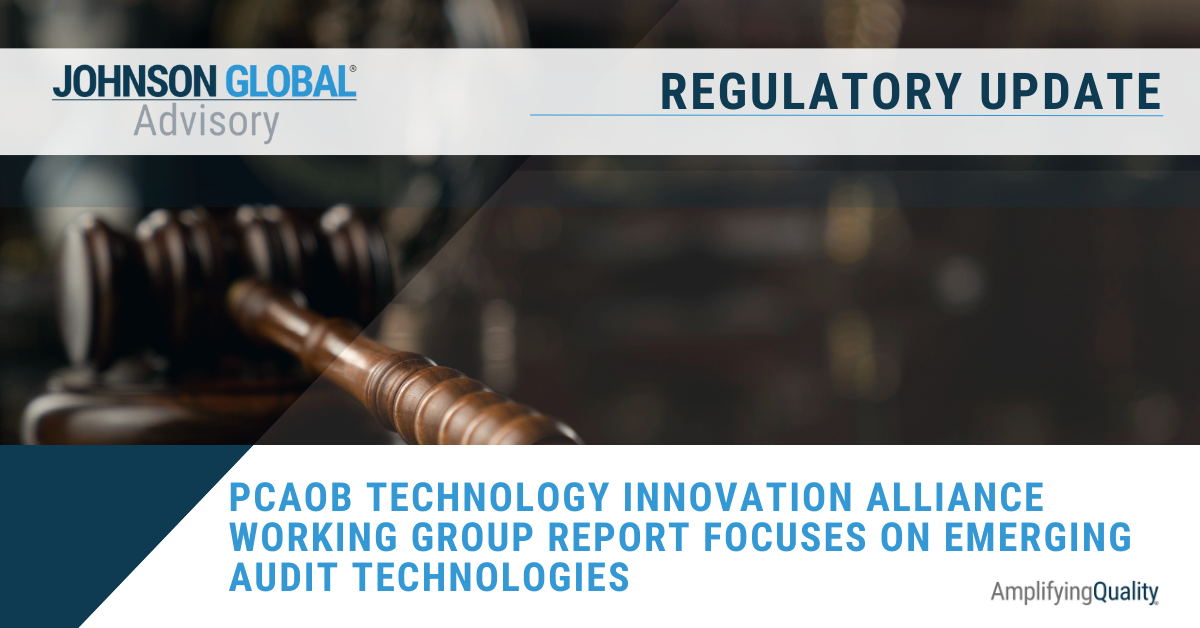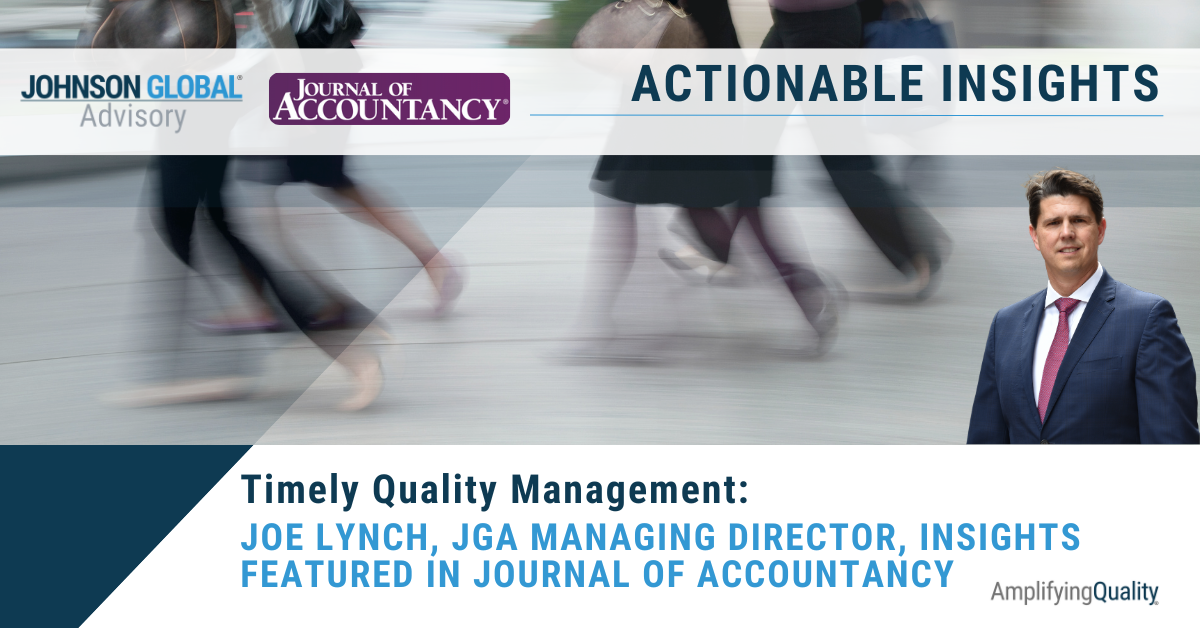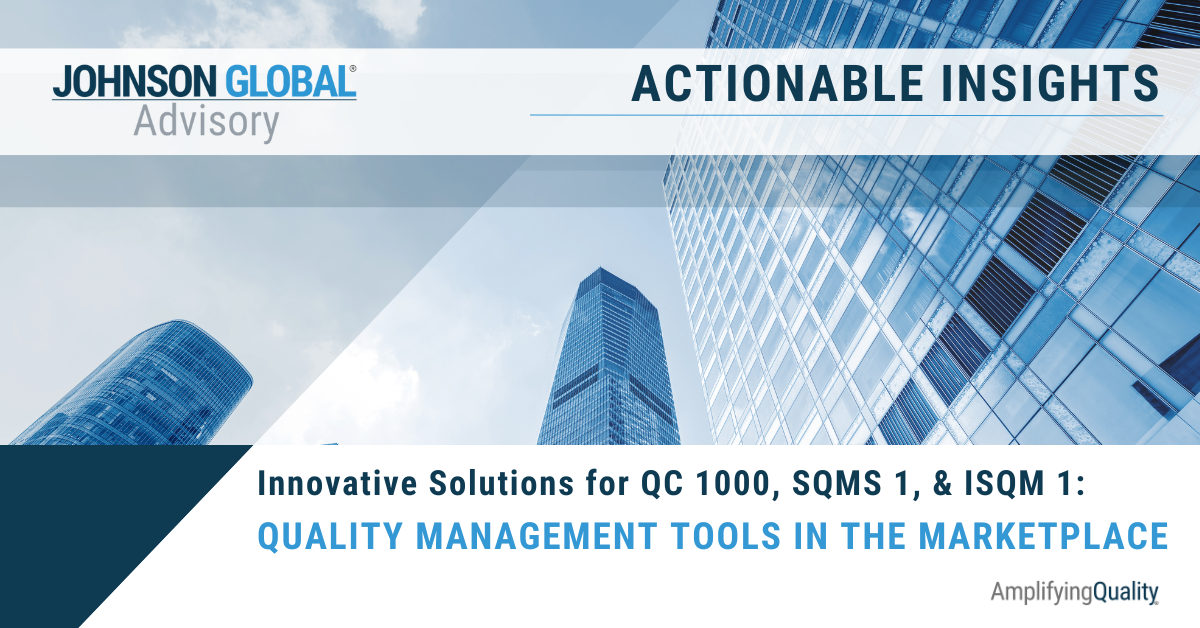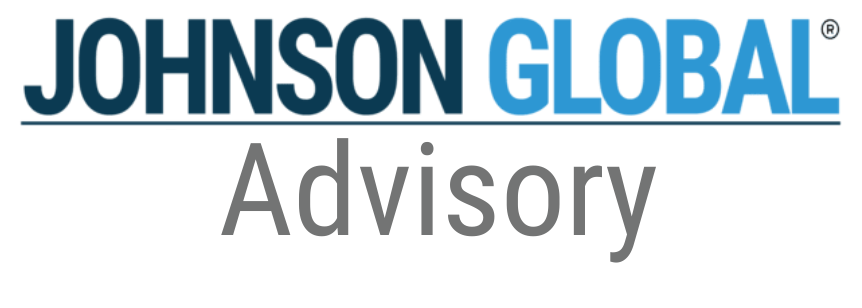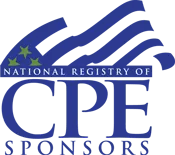Unpacking the New Quality Control Standards: Part 1
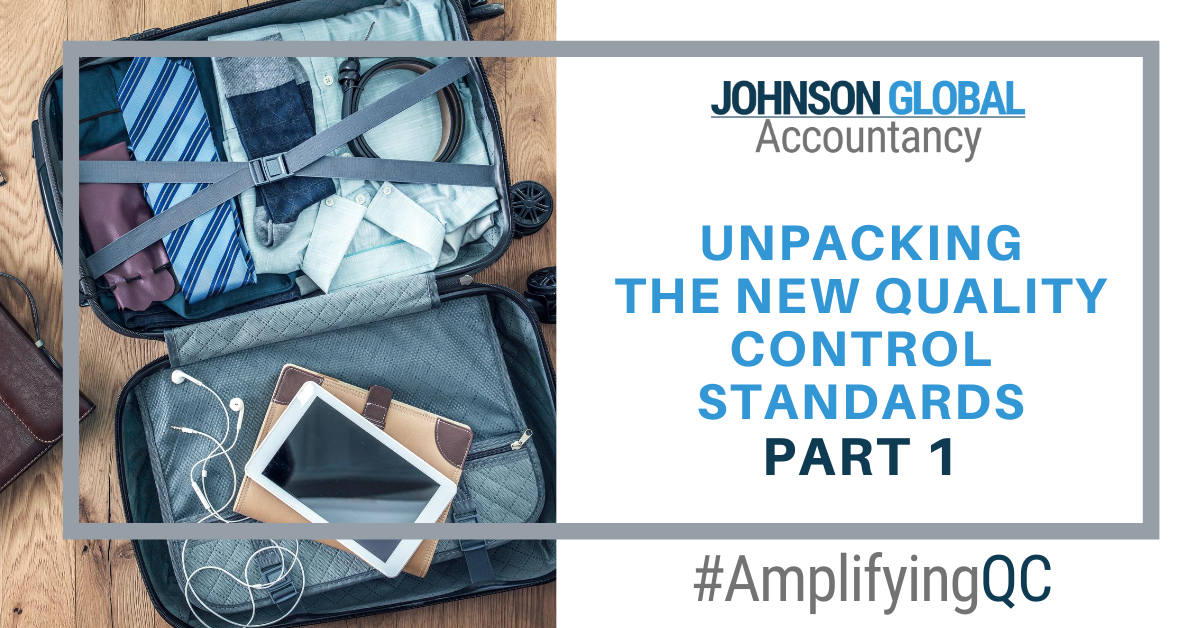
As we continue to unpack common preparations for the release of the new PCAOB QC standards, we will build on last month’s discussion “why do we need new QC standards”. Now we can consider “what the new QC standards are,” keeping in mind that there may be some changes in the final QC standard based on comments received during the open comment period.
This article will cover the first 5 aspects being considered as part of the new QC standards. In August we will dive into the others.
Firm Governance and Leadership
This aspect of the QC system relates to the firms’ tone at the top, or in other words what is the culture and environment that has been set by firm leaders. Professionals generally follow the tone set by their leaders, and firm leaders that are lax on ensuring quality work by its professionals or lacking ethics, generally lead to its professionals performing unacceptable quality of work. The PCAOB has already established tone at the top as a critical part of what it expects of firms in their QC process.
Tone at the top has long been included in the PCAOBs inspection procedures as described in their reports. The new QC standards should formalize this quality objective a lot more: making it a lot less touchy-feely, but instead requiring better documentation of aspects, like how leadership is committed to quality, how the firm plans for resource needs, how the firm fulfills its requirement to follow laws and regulations, assigning responsibility of the QC process to the CEO (or their equivalent), periodic performance evaluations being conducted to hold these leaders accountable, and how the firm deals with QC complaints (tip line).
In addition, the PCAOB is proposing the following incremental requirements from what is included in ISQM 1:
Firms must make explicit assignments of supervisory responsibilities at successive levels within various levels of the firm all the way up to the CEO.
The PCAOB is considering requiring a separate, specific requirement to direct firms to allocate sufficient financial resources to its audit and assurance practice.
The PCAOB is considering whether the QC standard should include a mechanism for independent oversight over the firms’ QC systems. Some of the larger firms have already started appointing independent directors to conduct some form of external oversight.
Firm’s Risk Assessment Process
It seems only fitting that the regulator born out of the Sarbanes-Oxley Act would require firms to develop a risk assessment process so that they can assess the design, implementation and operation of the firm’s system of quality control. Currently, the standards do not say much about risk assessment of the firm. ISQM 1 and the Concept Release aim to change that by requiring firms to actively and formally perform a risk assessment on its QC system as a proactive measure to reduce instances of non-compliant audit engagements. Firms would be expected to establish a formalized process for identifying and assessing quality risks.
Once these risks are established, the Firm will need to design and implement responses to address these quality risks. In a nutshell, firms would be performing a ‘what-could-go-wrong' assessment of all aspects of their QC system, which could be documented in something as simple as an Excel spreadsheet or even as intricate as a real-time database. Potentially this element could affect the other elements in the QC system (think about how the PCAOB’s risk assessment standards caused a sea change in the rest of the standards in terms of how to respond to risks).
Relevant Ethical Requirements
Firms will need to follow a process to fulfill firm and individual responsibilities under the appropriate ethical rules, including independence. Since we have seen that independence violations are the backbone of many a settlement order, we view this area as a priority for firms to manage their reputational and financial risks from non-compliance. Firms and their personnel need to understand and fulfill these ethical requirements, along with how to identify and respond to any ethical breaches. As the QC concept release was molded from ISQM 1, the PCAOB expects that a fair number of incremental requirements will be added to tailor the QC standard to the U.S. regulatory environment. This would include adding requirements to meet PCAOB ethics and independence rules and PCAOB and SEC independence rules.
As an example, the PCAOB plans to revise the standard so that professionals will need to report any apparent violations affecting the firm’s independence (such as the firm providing a prohibited service to an audit client), not just violations by a firm’s personnel. This means that firms will need to consider if it currently has a process in place for employees to report such violations. If not, they should set up a formal process for employees to raise these matters so that they can be addressed through the appropriate channels and there is no excuse for anything falling through the cracks! We have encountered circumstances where firms have a solid foundation in place to monitor independence of its people, but needed additional parameters to identify related parties of the firm, such as vendors and leasing relationships, and monitor those for any independence threats.
Also, independence issues will need to be assigned to a qualified individual with the right knowledge, skill, ability, capacity and authority to address these issues – not just a senior person in the firm. Foreign-registered firms should consider how they will be able to respond to this requirement. U.S.-specific ethics and independence rules have a number of nuances that tend to make the rules more restrictive – or at least enforced more strictly -- than their foreign counterpart requirements.
Consider these questions as you explore how your current processes should be adapted:
- How is your firm dealing with this now and will you need to make changes to comply with the QC standard?
- Do you have someone in your organization that is completely knowledgeable of SEC and PCAOB independence and ethics rules who can take on this role?
- Should there be two separate roles in the QC function, one for the creation of the policies/procedures; and the other for monitoring the compliance of those policies and procedures?
- How is your firm determining the existence and completeness of firm relationships (i.e. vendors)?
Acceptance and Continuance of Clients and Engagements
This gets back to the age-old dilemma… do we accept (or continue) with this client! The acceptance and continuance responsibilities in the new QC standard expand on the requirements in QC 20 in that firms are required to consider the necessary information needed for this decision and make appropriate judgments about the associated risks and the firm’s ability to mitigate those risks. Also being considered in the final QC standard is the process a firm should have in place to address situations where the firm finds out some relevant contrary information after it has already decided to accept or continue with a client. It’s time to start considering and addressing the following questions:
- Do you have a client acceptance committee?
- Is your firm’s approval over acceptance and continuance aligned with risk assessment and tone at the top?
- What happens when your privately-held client goes public and the audit requirements become more stringent to comply with the PCAOB and SEC?
- What could have changed in the year which had previously passed continuance or initial acceptance, which is now going to be harder (or should be harder) in the next year’s continuance decision?
- What are the safeguards to ensure that triggering events are properly raised up the flagpole? And what are these triggering events?
- What procedures are included in the firm’s practice monitoring program to evaluate effectiveness of client acceptance and continuance?
Engagement Performance
This component addresses the performance of engagement team members to ensure they are meeting the professional standards. Quality objectives that firms will need to consider are:
- Personnel understanding their responsibilities on an engagement
- Engagement teams exercising appropriate judgment
- Engagement documentation being assembled and retained
- Establishing policies and procedures addressing the nature, timing, and extent of review of engagement teams, including those less experienced members
- Making sure engagement teams have a policy to follow so they know when to consult
- What about when there are differences of opinion among team members – what do we need to do then?
The current QC 20 contains a general requirement stating that “policies and procedures should be established to provide the firm with reasonable assurance that the work performed by engagement personnel meets applicable professional standards, regulatory requirements, and the firm's standards of quality.” Clearly, by listing out specific objectives, the QC standard is going to require more effort and consideration by firms to address these objectives.
Generally, the PCAOB is anticipating that the Engagement Performance aspect will be closely aligned with the other PCAOB standards that are already established related to supervision, document retention, engagement quality reviews, fraud, other illegal acts, and going concern. In addition, with the increasing use on audits of parties outside the firm (such as non-affiliated firms, auditor-engaged specialists, and service delivery centers), the PCAOB is also considering incorporating quality controls that address how the principal engagement team evaluates their knowledge and skill; their independence; coordination of activities and supervision of their work. If you use a service delivery center to help with your audits, it seems like changes will be in this area! And even if these outside parties are complying with ISQM 1, the firm will need to consider their compliance with the U.S. QC standard.
Clearly, firms are going to have to expend and increase the resources allocated to compliance efforts once the QC standards are released. Lookout for future blog posts where we will continue to unpack and help you through more considerations of these and the remaining five components of the QC concept release. While the comment period seems like eons ago, these preparation efforts will save you aggravation and unnecessary fire drills when the time comes.
Geoff Dingle,
JGA Managing Director, works with PCAOB-registered accounting firms helping them identify, develop, and implement opportunities to improve audit quality. With over 20 years of public accounting experience, he spent nearly half of his career at the PCAOB where he conducted inspections of audits and quality control. Geoff has extensive experience in audits of ICFR and firms’ systems of quality controls. Prior to the PCAOB, he worked on audits in various industries at Deloitte in Atlanta and Durban (South Africa).
